5 Tire Rotation Patterns: Maximizing Tire Lifespan
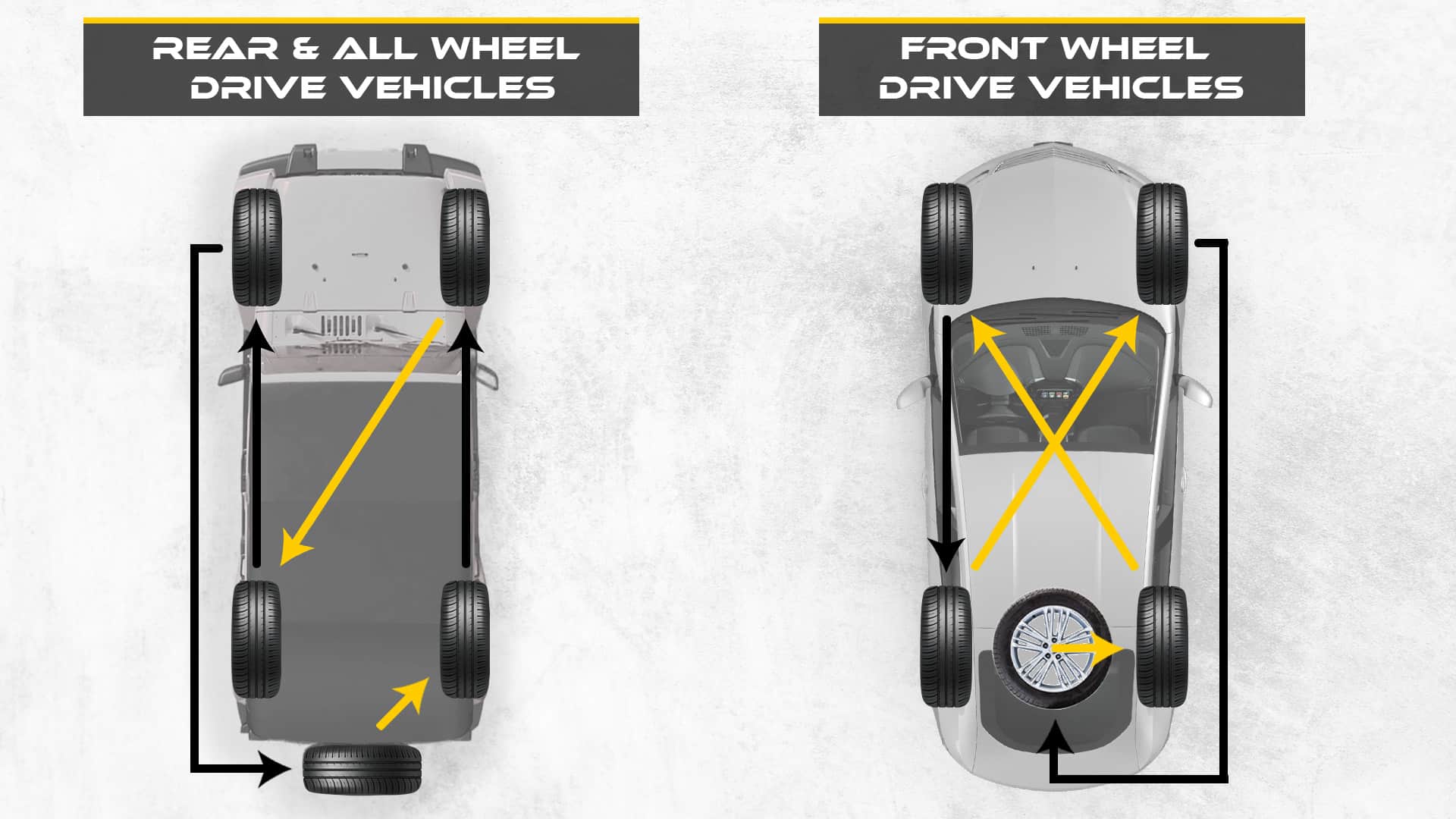
We all know that rotating four tires on a regular basis helps extend the tire life and keeps tread even across all the tires. Additionally, it ensures a smooth ride with minimum noise. Now, let’s dive into 5-tire rotation patterns.
Provided you have a matching full size spare tire and wheel available; then your best bet is using one the 5 tire rotation patterns. You can see this kind of set up in some models of trucks and SUVs, popular brands include Jeep among others.
What is the pattern for a 5 tire rotation?
The 5-tire rotation pattern involves including a full-size matching spare tire with your regular rotations. There are only two recommended patterns for this type of rotation, which depend on whether the drive axle is on the front or rear of your vehicle: the forward cross and the rearward cross.
We suggest following our recommendation based on your drive axle, but it’s always a good idea to double-check your owner’s manual for any specific guidelines from your car manufacturer that might affect the best way to rotate your tires.
– Front Wheel Drive Vehicles (5-Tire Forward Cross)
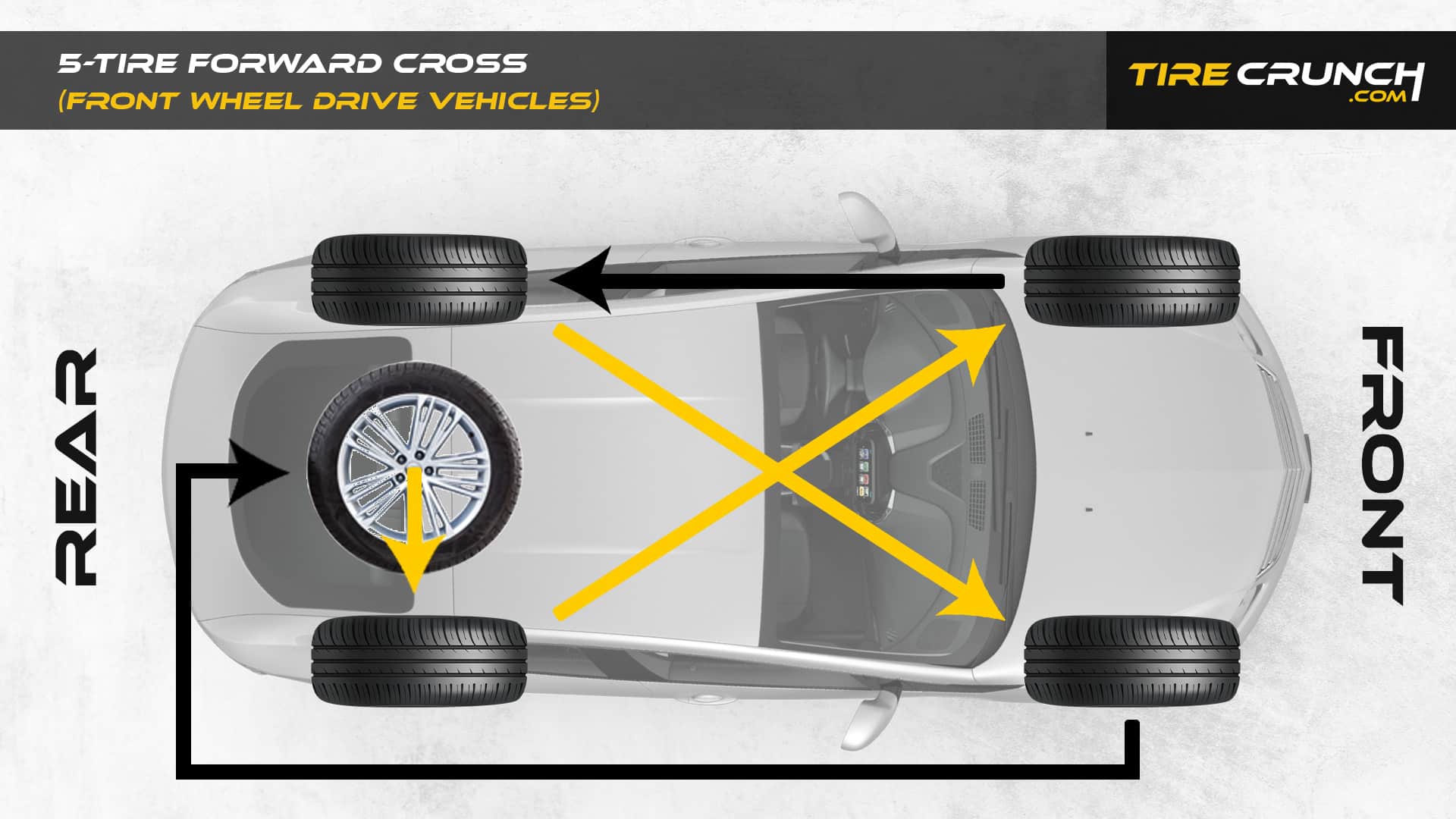
The 5-tire forward cross is a tweaked version of the commonplace forward cross, which is typically used for front wheel drive vehicles.
With the standard forward cross, you move your rear tires to the opposite sides of your car or truck’s front axle. Then, you shift your front tires back to your rear axle.
For the 5-tire variation, you move your rear tires to the opposite sides of your car or truck’s front axle. Your spare goes on the rear passenger side. The front driver’s side tire goes to the rear driver’s side. The front passenger’s sides tire becomes your new spare.
– RWD, AWD, 4×4 (5-tire Rearward Cross)
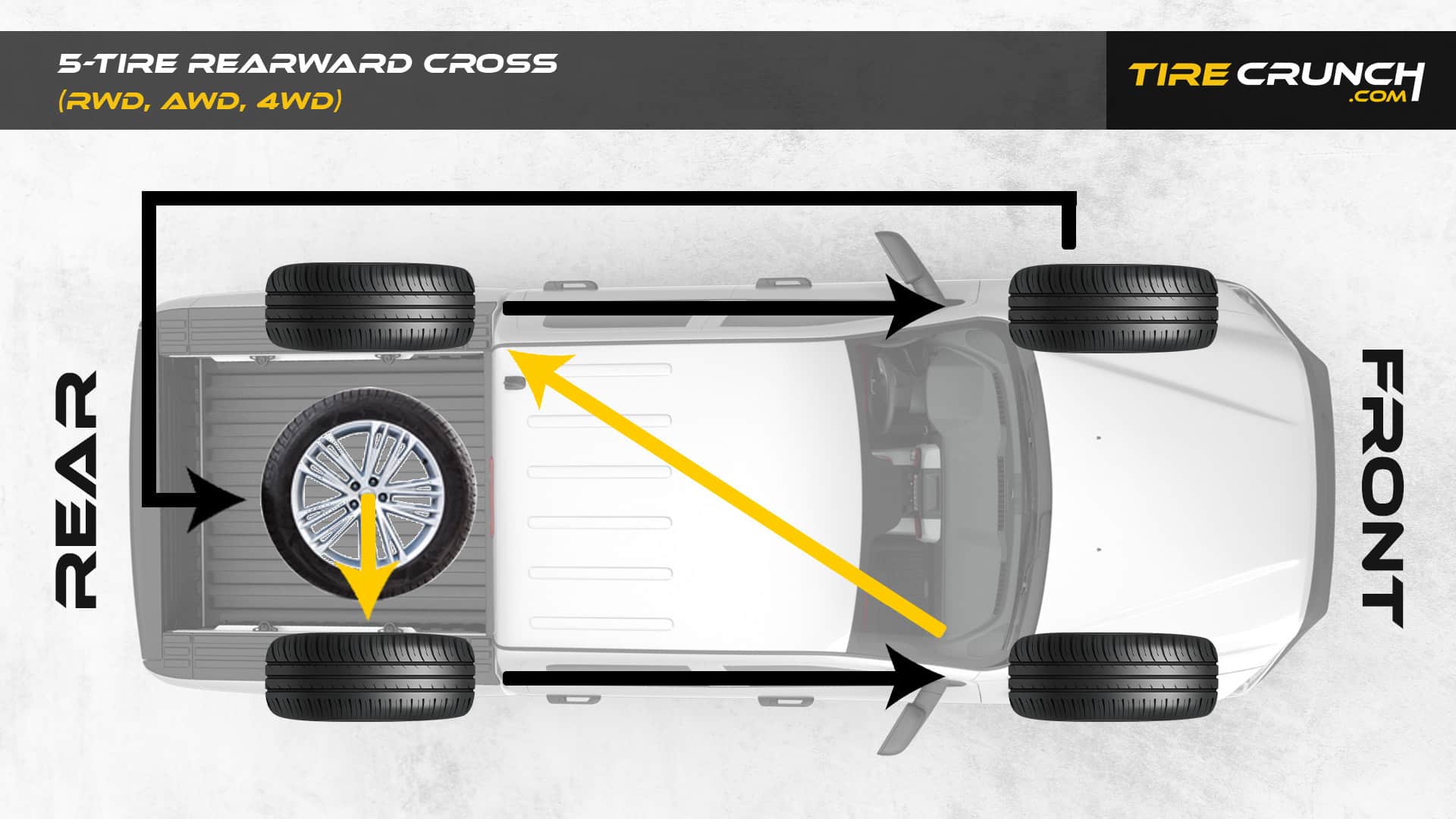
The 5-tire rearward cross is a modified version of the common rearward cross that’s typically used for all-wheel drive, four-wheel drive, and rear wheel drive vehicles.
With the standard rearward cross, you switch your front tires to opposite sides of your car or truck’s rear axle. Meanwhile, you move your back tires up to take their place on the front axle.
With the 5-tire rearward cross , you start by taking out your spare tire and replacing it with the rear passenger side tire. Then, move that rear tire to the front passenger side of your car or truck. After that, take the front passenger side tire and shift it to the rear driver’s side.
Next up is moving the rear driver’s side tire to replace your front driver’s side tire. Finally, switch your front driver’s side tire back to where you originally had your spare.
How To Rotate 5 Tires On A Jeep
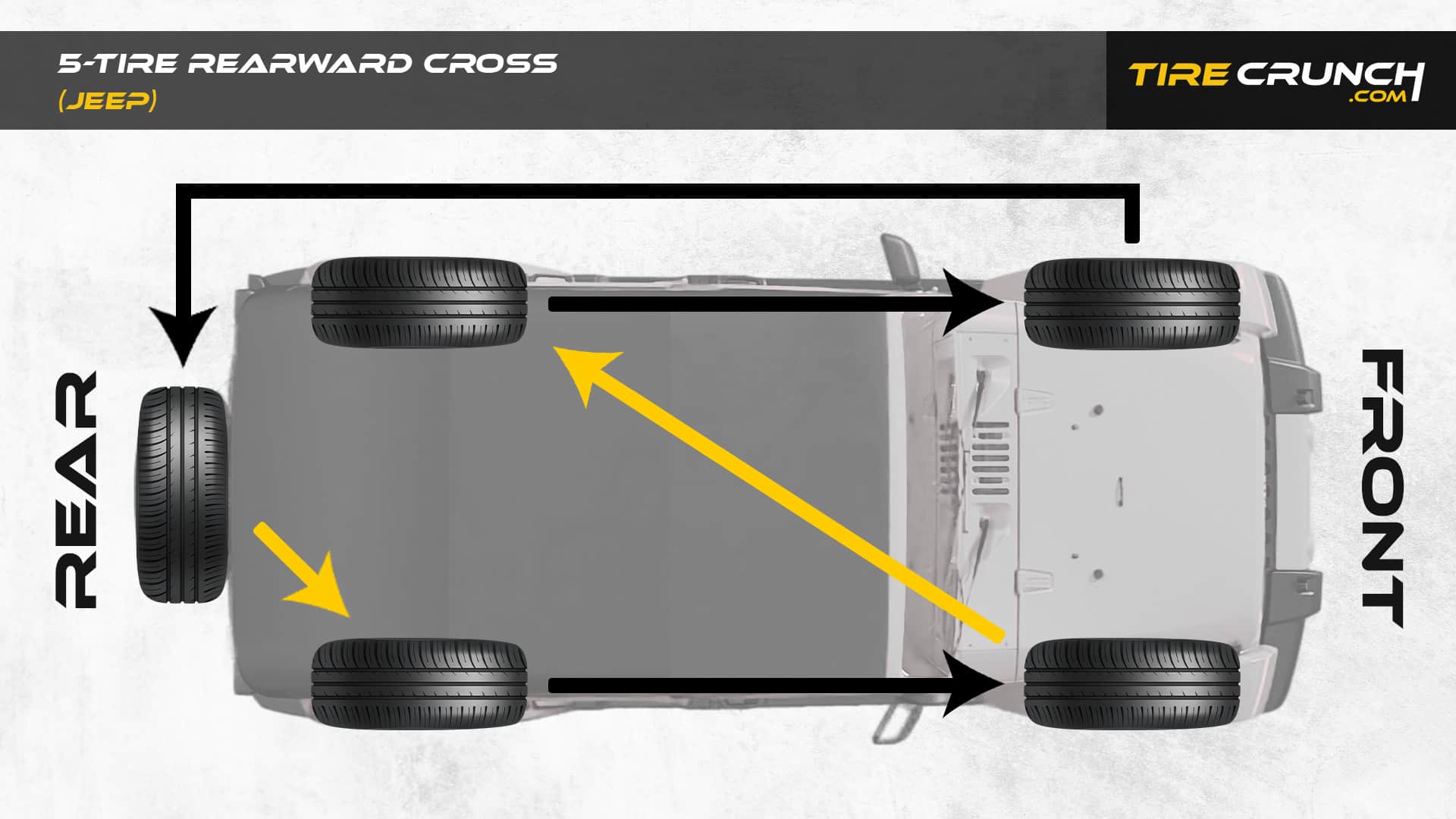
To rotate 5 tires on a Jeep, you can use the 5-Tire Rearward Cross pattern.
Advantages of Tire Rotation
There are several advantages of implementing the 5-tire rotation pattern:
5 Tire Rotation Patterns Vs. 4 Tire Rotation
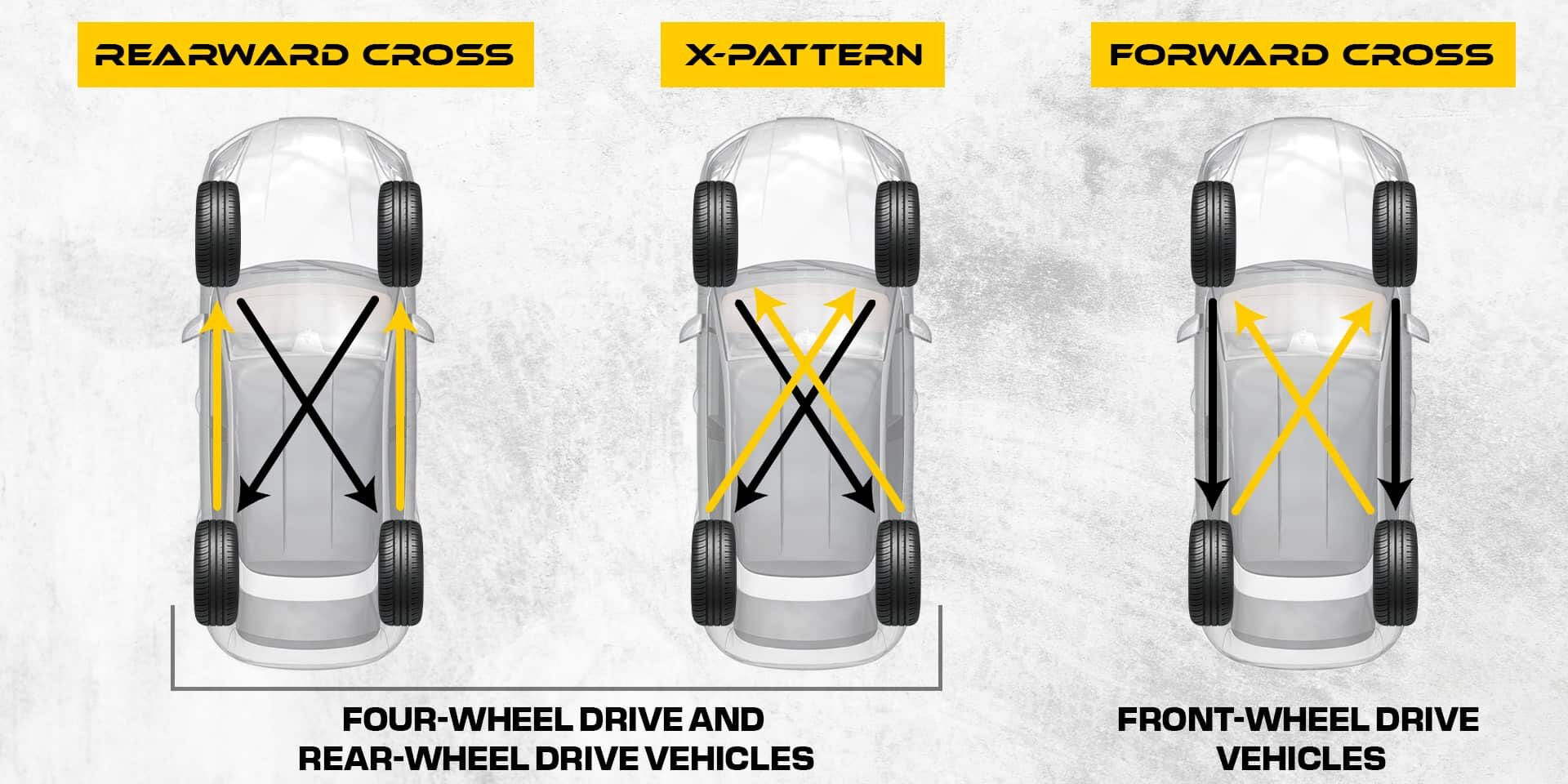
If you have a full-size spare tire that matches your other tires, then including in your rotation pattern can bring several perks.
What is the recommended frequency for a 5-tire rotation?
Just like with regular 4-tire rotations, following a schedule is vital to maintaining your tires’ longevity when rotating all five tires – including the full-size spare.
Your tire manufacturer will typically set the specific mileage interval requirements for regular rotation. The recommended mileage interval from most tire manufacturers generally falls between 5,000 and 8,000 miles.
For those going above and beyond, we suggest rotating their tires every 5,000 miles instead of waiting towards higher-end part of the estimated range.
This reduces the risk of uneven wear and alerts you sooner in case there could be an issue with any tire balance or alignment/suspension problems before they reach damaging severity.
How do I know when my tires need to be rotated?
Rotating your tires is crucial for keeping them in good condition as they age. It’s best to take timely action before any noticeable wear appears on them.
While you should schedule regular tire rotations ahead of visible signs, there are still a few signs you can look out for. One key sign is uneven wear, which could be displayed by only one tire or all of them. Even developing issues with handling, vibrations, and irregular sounds such as grumbling or roaring may indicate that it’s time to rotate your tires.
When Is 5-tire Rotation Not Suitable For Me?
It’s essential to note that a 5-tire rotation is only meant for cars and trucks that have a full-sized spare tire available with the same wheel and tire matched with the other four wheels and tires on the vehicle.
Using temporary spare tires isn’t suitable for the 5-tire rotation service. The spare tire must precisely match those of your four primary ones, including its wheel.
How To Perform A 5-Tire Rotation At Home?
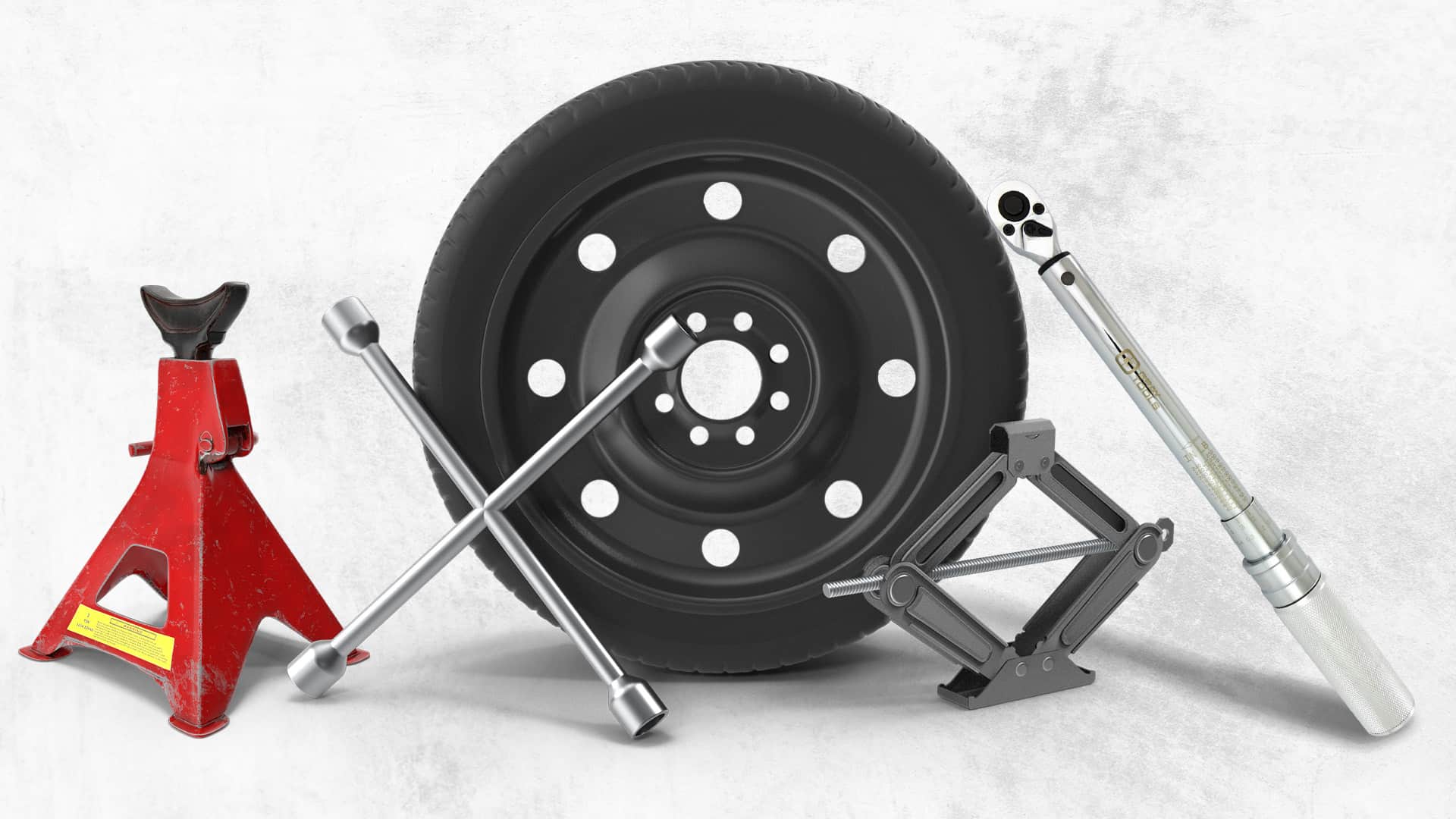
If you’re planning on doing your own tire rotation, there are a few supplies you’ll need. These include a lug nut wrench, torque wrench, car jack and jack stands.
Once you’ve gathered all necessary supplies, park on level ground with firm footing and follow these steps:
Final Words
It’s a pity that most vehicles no longer come with either a full-sized or standard spare tire. So if you’re lucky enough to have one on your car or truck – don’t forget about it! Make sure always to include it in the rotation cycle so you don’t miss out on its benefits.
5-tire rotation patterns can increase the lifespan of your set of tires by up to 20%, while helping to maintain the proper condition of your spare before it wears down due to dry rot. This practice adds an extra level of safety since it keeps your spare prepared in case you ever need it during emergencies.
